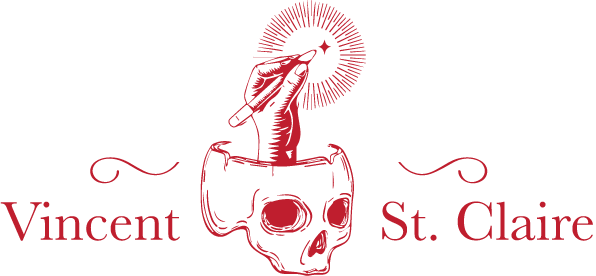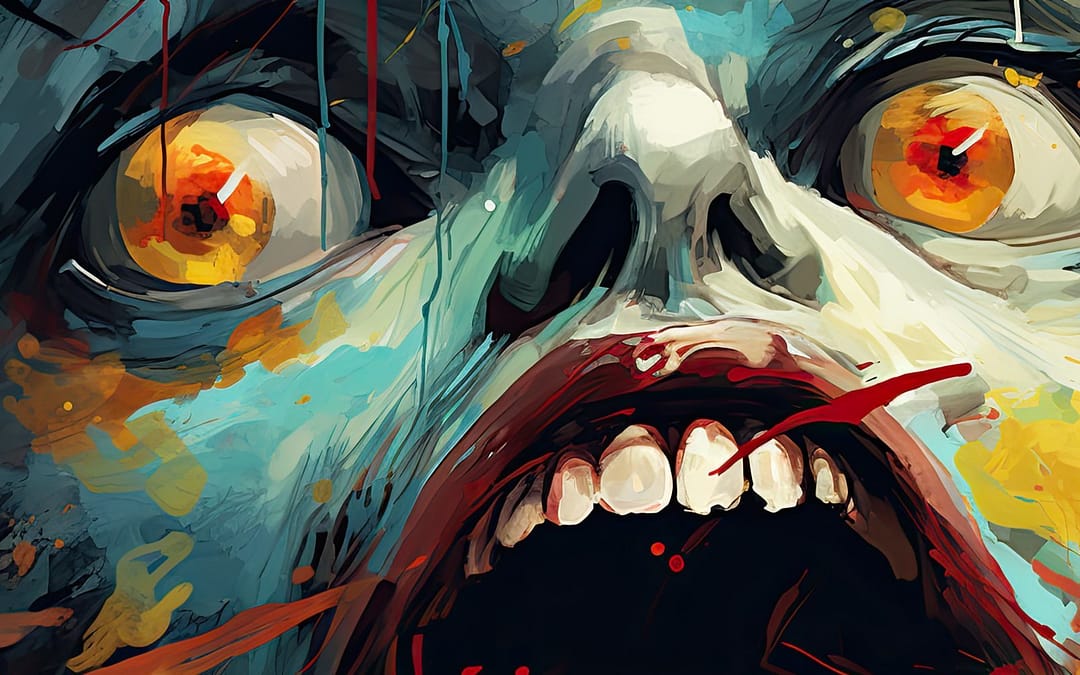The newspapers heralded Jonathan Victor Gilman as “the successor to Pickman” (found in the Boston Globe) and the “artistic titan of the 21st century” (so said the Providence Journal). Some even ventured to place him upon a pedestal higher than the esteemed Bosch, Goya, and Grosz (a bold assertion eloquently championed by the Bristol Cove Gazette). In the minds of all who beheld his works, there lingered no shadow of doubt: Jonathan was an artist of rare genius, possessing an uncanny mastery over color and detail that bewitched the eye and stirred whispers of madness in the soul. Voices murmured of his paintings as being not of this earth, but rather haunted visions, where his spirit seemed to bleed into the canvas, weaving a myriad of tales with each stroke—images as haunting as they were profound, painting windows into realms that danced perilously on the edge between our reality and the ineffable.
The day I first met Jonathan was in Winston Taylor’s art gallery. The skies, heavy and sullen, lent their somber mood to the day, while the gallery’s windows transformed into mirrors of the darkened skies above, casting an illusion of the glass simmering with an otherworldly energy. Shadows danced across the floors and walls, casting eerie patterns that breathed uncanny life into the artworks displayed, as if the dim light peeled away layers of reality to reveal hidden, sinister dimensions. Amid this spectral light show, I stood captivated before an original Pickman, its macabre details leaping from the canvas with a vividness that the artificial glow of track lighting could never unveil. Its proximity to a Gilman piece not only echoed the comparisons noticed by critics but also underscored the profound differences between their visions, a testament to the depths of their artistic divergence.
The Pickman piece, with its grotesque grandeur, eerily resonated with the goth underground of the early ’80s. It was a vestige from an age when painters, with daring strokes, conjured nightmarish visions from the murky depths of our collective dread. There was a time when the mere sight of such a painting would cause the bravest souls to avert their gaze, and galleries, in a mix of fear and revulsion, banished Pickman’s work from their walls. Yet, despite this, his art refused to be forgotten, quietly claiming its place within the secretive halls of private collectors. Over years, these haunting images, through shadowy paths, found their echo in the most unexpected of places—from the dimly lit corners of opium dens to the eclectic walls of head shops, casting a spectral bridge from London’s misty alleys to the vibrant heart of San Francisco.
In the vein of a true Pickman masterpiece, the painting stood as a testament to the sublime and macabre. It depicted a desolate, unholy necropolis. Each detail was meticulously crafted to ensnare the viewer in a morbid trance of awe. This canvas was not merely art. It was a gathering of nightmarish visions, a congress of the grotesque.
In the painting’s lower corner, creatures too grotesquely altered to bear any resemblance to the fauna of our world scurried amidst the tombstones. Their forms, distorted by an unholy palette of madder browns, diseased umbers, ochres, and lifeless grays, engaged in a morbid dance of death. These beings feasted upon scattered bones, unearthed fragments of the newly dead, and engaged in savage displays reminiscent of ancient arenas where only the merciless survive. Amidst this carnage, entities that bore a passing semblance to huge spiders, bathed in an otherworldly cobalt glow, observed with detached curiosity. Their presence added a chilling watchfulness over the scene, as if they were guardians of a gateway to realms beyond human comprehension. The painting was a canvas of chaos, each stroke a testament to the abyss that yawns at the edge of sanity, where violence and beauty intertwine in a macabre waltz.
Well-versed as I am in the dark history of Pickman’s creations, I’ve encountered a myriad of grotesqueries that defy even the most fortitudinous of imaginations. Yet nestled atop a macabre throne of aged skulls at the canvas’s heart, there squatted a creature that struck a chord of primal fear within me. Its maw, a grotesque slit, bore four rows of gleaming, blood-tinted fangs, set against its sallow, pockmarked visage. From the scarlet sores that speckled its flesh, a viscous, amber-hued ichor seeped a path down its neck and chest, both dreadfully hirsute with black-striped muddy brown fur, to a thick, hard fleshy phallus protruding from between its legs where the mucus glistened its arousal. The creature’s form commanded a disturbing presence, rooted deeply in the nightmare realms of the subconscious. As I gazed, the pungent aroma of decay seemed to waft from the canvas, so potent was the illusion of its realism that I half-believed I could stretch forth a hand and trace the coarse reality of the skulls on which the creature brooded. A shiver compelled me to dispel the illusion, a stark reminder of the thin veil separating perception from reality.
The monstrous figure in the heart of the painting commanded my gaze refusing to be ignored. Perched atop a grotesque throne of chaos, it engaged in a ghastly feast, the remnants of its latest meal being carelessly discarded from its cavernous maw. Its talons, using the dirty finger of a child’s hand now seized by rigor mortis, navigated the spaces between its sharpened teeth extracting remains still lodged there. Yet, it was the creature’s eyes that truly ensnared my soul—a haunting gaze, imbued with a ravenous emptiness and the sickly yellow of decay, that seemed to bore into the very essence of my being, marking me as yet another conquest. These eyes, void of any emotion save an insatiable hunger, tethered me to the spot, a silent witness to the horrors that unfolded beneath its malevolent watch.
I shifted my attention to examine the Gilman artwork more closely, and as I did, the artist himself seemed to materialize beside me. I am not one to startle easily, yet I confess he approached so silently that he took me by surprise. This sudden appearance, coupled with the disquieting essence of his painting, enveloped me in an immediate sense of unease.
If Pickman’s work conveyed an aura of malevolent dread, the Gilman canvas ventured beyond, casting aside such dread as minor trifling, only to supplant it with a disquieting assault on the essence of one’s soul. It threatened not just the emptiness of mind, but an unsettling turmoil within, enough to empty the sturdiest of constitutions. Where Pickman’s painting one could almost feel the cool, evening breeze amidst the tombstones, the very fur of his creatures bristling with life, as if you could almost reach out to pet the beast even if you knew that you would only draw back a stump, Jonathan’s masterpiece ensnared the observer entirely. It was as if one were drawn inexorably into the fabric of the painting itself, witnessing the very hues breathe life into one another, a seamless dance of color and shadow that whispered of realms beyond the grasp of mere mortals.
“It took me four hours to paint that scene,” he said.
“Merely four?” My astonishment was genuine. “I would have surmised that a lesser artist might spend weeks or even months to bring forth a work of such intricate detail.”
“Indeed,” he concurred. “This piece was—” his voice trailing off into a deliberate pause “—inspired.”

